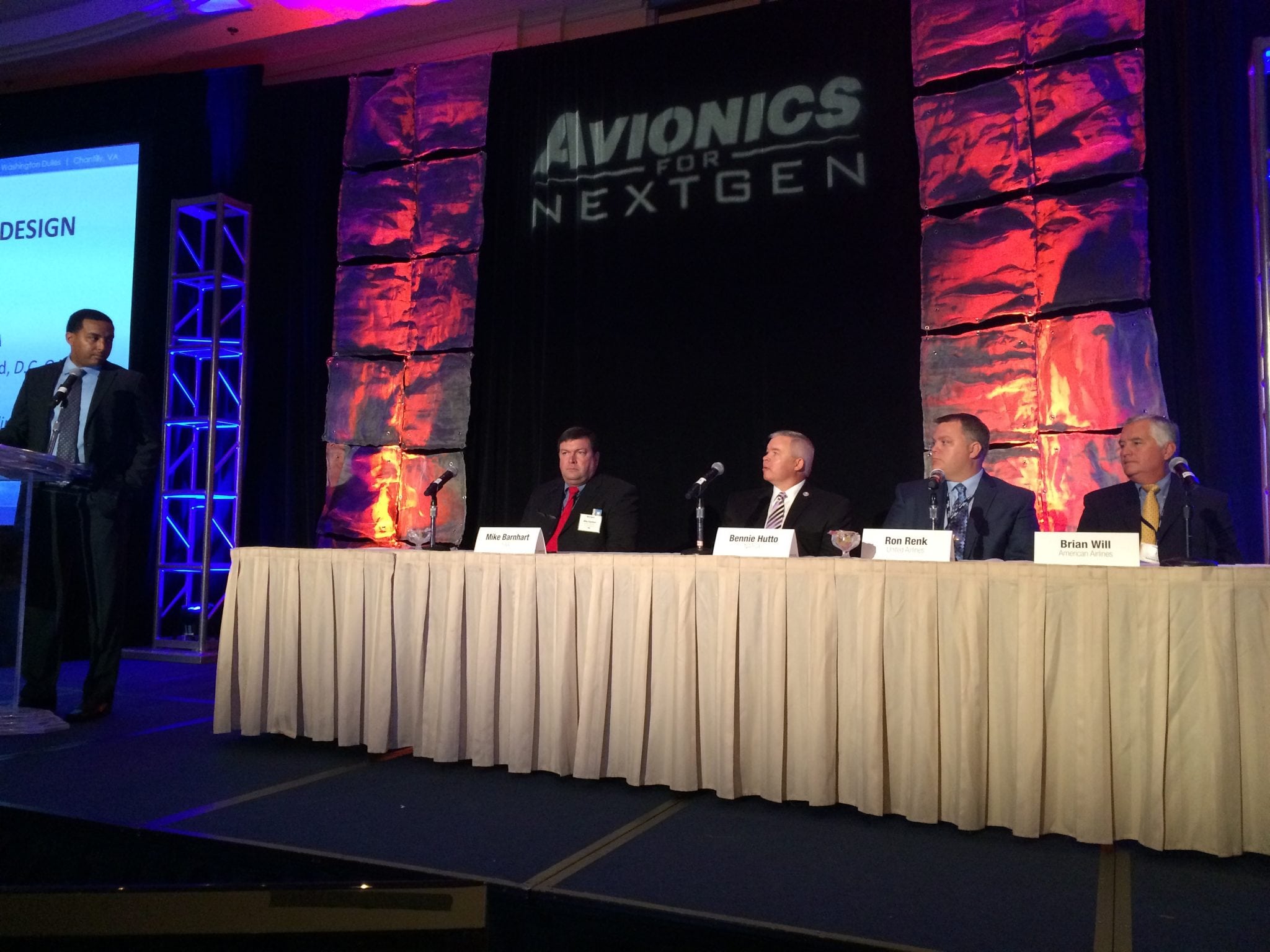[Avionics Today 10-14-2015] At the 2015 Avionics for NextGen conference in Herndon, Va., Wednesday, experts from the FAA and the National Air Traffic Controller’s Association (NATCA) spoke to their struggles and successes in upgrading airspace in heavy traffic areas alongside airline partners American Airlines and United.
 |
| Participants of the Metroplex Airspace Redesign panel at the Avionics for NextGen 2015 conference. Photo: Juliet Van Wagenen |
Metroplex airspace redesigns are central to achieving the benefits of NextGen. Through the initiative, the FAA improves regional air traffic flows in metropolitan areas, which often face heavy congestion, by optimizing airspace and procedures using satellite-based navigation around some of the nation’s busiest airport systems. The FAA has identified 21 metroplexes where it plans to take a system of airports with shared regional airspace and realign conventional routes and shift airspace boundaries to increase airspace throughput.
The FAA, NATCA and airline partners have already implemented NextGen procedures through the redesigns at several airports, including those in the Washington D.C. area, Chicago and Houston regions and are seeing the advantages of the changes there, according to the panelists.
“The metroplex and the changes in airspace in Houston have let us use and leverage equipment that the airlines have bought and paid for many years ago to use the Optimal Profile Descents (OPDs), to up our efficiency and fuel use. And of course reliability is very important to us; having a procedure on paper that can be repeated day-in, day-out with schedule reliability. Obviously, our passengers pay us to deliver them to a city on time every day; these procedures help us get that repeatability and reliability we need to continue to perform within a small window of time every day,” said Ron Renk, chief technical pilot at United Airlines.
Air Traffic Controllers (ATCs) are also seeing the benefits, both with a reduction in workload as an effect of reduced communication, and in managing growing congestion in high-traffic areas.
“The benefits we see is having repeatable and predictable paths from both the lateral and the vertical side,” said Bennie Hutto, NATCA vice president of PCT Terminal Radar Approach Control (TRACON). “Knowing the path you’re going to fly from the top of your descent all the way to the runway helps us out. We know exactly where you’re going to be so we can use airspace that we couldn’t use in the past. We have altitude windows that are out there, we can put aircraft in front of those waypoints or behind them, above and below, so it’s making airspace more efficient.”
While several metroplexes and operators are seeing the advantages of the redesigns already, the North Texas area metroplex, an early project within the initiative that aimed to upgrade Dallas Fortworth and Dallas Love airports, hit some speed bumps in the way of implementing procedures and is still looking to derive many of the benefits others are able to see.
“North Texas and D.C. were the first two metroplex projects,” explained Brian Will, director of airspace modernization and advanced tech at American Airlines. “As far as the metroplex piece goes … we had a bit of an expectation that we could come back and this would be an iterative process … but in some instances, for the sake of time, in the spirit of keeping things moving, we had to make a few compromises and we the notion was ‘when we come back for round 1A we’ll see what we can do to improve it’ and then, unfortunately, the funding we thought we would have to come back and do what we thought would be sort of a two did not materialize.”
According to Mike Barhnart, national metrolplex program manager at the FAA, some of these issues included the need to adjust altitudes that proved hard to hit as well as challenges associated with implementing Time-Based Flow Management (TBFM), a time-based air traffic metering automation tool that expands on the legacy Traffic Management Advisor (TMA) system to optimize the use of PBN operations at high altitude.
“There was not a place for [TBFM procedures at North Texas], so controllers are working to get those into the sequence not only in Fort Worth, but in the adjacent centers, Kansas City and Albaquerqe and Houston, so controllers are working with those facilities to get the sequencing set further out,” Barnhart said.
While Will noted that the FAA and NATCA have agreed to return to evaluate and hopefully remedy some of the challenges that still exist in the North Texas metroplex, he hopes those currently attempting metroplex upgrades can learn from the early mistakes.
“Do the best that you can the first time around because your ability to come back and do it may prove to be a little bit more difficult,” said Will.
There are huge benefits for passengers and controllers when it comes to implementing these procedures, but for airlines as well, the sooner these upgrades take hold, the better.
“We put a lot of skin in this game,” said Will, noting that American Airlines has upgraded its aircraft to fly procedures such as Area Navigation (RNAV) at the price tag of an estimated $50 million. “Buying an airplane is like buying a $100 stock knowing that the longer you keep it the less that $100 stock is going to be worth. An airplane is a depreciating asset. Every day the airplane is on the property and not operating to its full potential, you are losing potential capital.”